Who is Andrew Hallam and why listen to him?

Andrew Hallam didn’t grow up filthy rich. He was one of four kids and his parents had very regular jobs as a mechanic and store clerk. So from a young age, Andrew understood that he was responsible for his own finances.
As a young adult, Andrew became a private school teacher in British Columbia. This job didn’t give him a good ole’ cushy public sector pension, so he knew he had to get this “retirement” thing figured out for himself!
He read over 400 personal finance books before age 35. And the things he learned allowed him to become a millionaire and semi-retired while relatively young.
He is now very surprised that personal finance is not taught in schools. Our financial knowledge has such a giant impact on our lives. (Unlike many other things we are taught like equilateral triangles! I mean, when you gonna use that??)
Today his book The Millionaire Teacher is one of the top-recommended personal finance books. (People in the Personal Finance Canada subreddit seem to love it.) Andrew’s book is so popular because he simplifies the most important investing ideas for us, while also diving into enough details to be practical.
So let’s explore some of the top lessons I learned from Andrew’s book, beginning with the first lesson…
💸 1. Save Diligently: Don’t spend money on anything you don’t need to build wealth faster
When Andrew first started his teaching job, he was single-minded about getting rid of his debt:
- He lived with roommates even though he didn’t like it.
- He basically survived on potatoes, pasta and clams. (He picked up the clams from the local beach by hand!)
- And for a while he even rode an old mountain bike 70 miles every day to commute to work—to save on gas!
Those sacrifices paid off. He was able to save 70% of his fairly average salary and payed off his student loans in a year. After that, he began directing all his savings to his investments. 6 years later bought some oceanfront property which he aggressively paid off in a short time. Meanwhile his coworkers who felt sad for him a few years ago were still stuck in deep debt.
Does this mean we should all live like monks or act like Scrooge, hoarding our money until we’re sick in a nursing home? Not at all. Andrew believes if you’ve already got enough, then it’s perfectly fine to buy a luxury item for enjoyment.
Differentiate between wants and needs
However, if you’re starting out and trying to build wealth, then it makes total sense to avoid any unnecessary consumption. We should differentiate between what we want and what we need. We should also ask ourselves the question: how often has buying something new actually led to more enjoyment or fulfillment? I want to share a quote from a different personal finance writer named Joe Dominguez, who said:
“We have learned to seek external solutions to signals from the mind, heart or soul that something is out of balance. We try to satisfy essentially psychological and spiritual needs with consumption at a physical level.”
– Joe Dominguez, Your Money or Your Life
(By the way, if you have trouble avoiding overconsumption in our consumerist culture, then you’re not alone. If you want to adopt a healthier perspective on money that can also help you save a lot more, go see our summary of Your Money or Your Life by Joe Dominguez.)
In the pursuit of appearing wealthy, many people go broke. In the end, they accumulate not wealth, but stress. For example, most people nowadays buy cars on loans, even several year long loans. They choose a car based on the largest payments they can afford, not considering the total cost of the car in the end. Other people buy the most expensive home their bank will let them sign a mortgage for. This is a dangerous situation because sudden problems like temporary unemployment or a rise in interest rates can quickly make them homeless.
If you’re considering purchasing a home, double the interest rate and figure out if you could still afford the payments. If you can, then you can afford the home.
Many of us believe that a higher income would get rid of our money problems. Yet NBA basketball players make enormous salaries, but 60% of them are broke within 5 years of retiring. Lottery winners have similarly depressing statistics. And people in general tend to simply spend more as their income increases, a phenomenon known as “lifestyle inflation.” So what’s the answer?
Well, to really get rich, we must live like rich people do.
Most millionaires do not buy flashy stuff. Researcher Thomas Stanley says the average millionaire’s car costs just $31,367.10. And unlike what most of us assume, the average millionaire is not driving around a Ferrari or Lamborghini. In fact, most millionaires drive a Toyota. Thomas Stanley wrote a whole book busting many of these pop culture myths of “millionaires” in his book The Millionaire Next Door. After extensive surveys, he found most millionaires are regular hard working people, often blue collar. They saved money over a lifetime to secure a good retirement for themselves.
Andrew first found out about these frugal mindsets of wealthy people when he worked for a mechanic named Russ who was a millionaire single dad. From this mechanic, Andrew a lot of money-saving advice. For example, he learned never to buy cars new or lease them because you lose a lot of money that way. Most people who buy a new car lose thousands of dollars in just the first year because new cars quickly drop in value. Instead, the mechanic told Andrew to look for used cars which have around 60,000 miles (100,000 km) and that are in good shape. Following this mechanic’s advice, Andrew found he could buy a car, drive it around for a year, then even sell it for a profit.
On one occasion, I bought a low-mileage, 12-year-old Toyota van for $3,000. I drove it 4,000 miles from British Columbia, Canada, down the Mexican Baja peninsula, then on to Guadalajara, before driving back to Canada. After covering more than 8,000 miles in a single trip, I sold it for $3,500.
I guess the point here is that rich people often live frugally. That’s how they became rich! Sam Walton who founded Walmart continued to drive the same old pickup truck for decades. When journalists asked him why, he said incredulously: What was he supposed to do? Drive his hunting dogs around in a limousine? By the way, if you want to learn more about how he became ultra-successful while still sticking to his values like frugality, go read our summary of Sam Walton’s book Made in America.
To get started saving, first pay off all your credit cards and high interest loans. It makes no sense to invest your money which may earn you 10% interest if you still have debts that are costing you 20% interest!
After that, writing down your expenses is a great idea. This will shine light onto where exactly you are spending money. As business guru Peter Drucker said, “What gets measured, gets managed.”
Andrew lived extremely frugally to pay off his student loans in a year and begin investing. In fact, most millionaires live simply, that’s how they became rich! Surveys show the average millionaire drives a Toyota, not a Ferrari. The first step to building wealth is paying off your credit cards and high-interest loans. Then write down all your expenses to track where your money is going.
📈 2. Compound Interest: The power of compound interest can make your investments grow rapidly over time, so you’re wealthy by retirement
What is being wealthy anyway?
Most people would probably agree you’re wealthy if you don’t have to work ever again. I mean, if you have wealth on paper, but you’re still forced to go to a desk job you don’t like at 8am every day, that doesn’t sound very wealthy to me.
So how much money do we need to save to never work again?
Well, there’s a good rule of thumb called The 4% Rule. This means you can withdraw 4% of your savings every year and you won’t run out of money, because at the same time you’ll be making 4% or more in interest. That’s a safe assumption to make. However, if you took out more than 4% every year, then eventually you’ll run out of money. Here’s what all this means in practice. If you want an income of $100,000 every year in retirement, then you need to save $2.5 million. (Because 4% of $2.5M is $100,000.) Or, if you want $40,000 every year in retirement, then you need to save at least $1 million.
Now, how on earth is a regular person supposed to save that much money?
It is entirely possible for a person with an average income to save a million or two over their lifetime, when they take advantage of the power of compound interest.
A quick 30-second explanation of compound interest:
When you invest money, each year your money grows a little. This growth is called interest. So if you invest $500 and earn 10% interest, then you would have $550 at the end of the year. Simple enough, right?
Now here’s where it gets very interesting. In your second year, that $550 would earn another 10% interest and become $605. This time, not only is your initial $500 growing again, but the $50 interest your earned last year is now also earning money too. Compound interest is the name for this phenomenon. It is what happens when your interest itself earns more interest. While the difference may not sound big in this example, over many years and decades this effect becomes exponential.
Compound interest is the reason why investing a few hundred dollars per month reliably turns people into millionaires by the time they are ready to retire. But the earlier you start investing, the more you can take advantage of this compounding effect, and the wealthier you’ll become.
When you’re retired, you can withdraw 4% of your savings every year and not run out of money. So if you want $100,000 per year, you’ll need to save $2.5 million. A regular person can invest a few hundred dollars every month and save $1-2 million over their lifetime because of compound interest. This is when your money starts working for you.
📊 3. Index Funds: Invest in stock index funds that have low fees, not actively managed mutual funds
Okay so let’s imagine you’ve been eating wild clams and riding your secondhand bike everywhere and saving most of your money. (Just kidding of course!) Now would be a good time to talk about the best types of investments to put all those savings into.
Hey, you weren’t planning to stuff all that in cash under your mattress, were ya?
Andrew says the first essential part of a good investing strategy are stock market index funds. Why stocks? Well, the stock market tends to grow, so converting your money into stocks can really grow your wealth. There are two main ways regular people invest in the stock market:
- Actively managed mutual funds
- Index funds.
An actively managed mutual fund is a collection of stocks. It is called “actively managed” because a fund manager tries to pick which stocks will go up in value and only includes those stocks into the mutual fund.
In theory, mutual funds sound like a very good idea. There’s a guy who is supposed to be an expert picking the best stocks for you. However, the reality is much different. We’ll explore some of the major downsides of mutual funds in a minute.
A stock market index fund is also a collection of stocks, but in this case nobody is trying to pick the best stocks. Rather, an index fund invests money equally into each stock in the market.
For example, the S&P 500 is a list of the 500 largest companies in the US. So if you invest in an S&P 500 index fund, that means you would now own a tiny part of ALL 500 companies in the market.
Why are index funds are better than mutual funds?
Andrew is clearly a huge fan of index funds, but why?
- First, markets rise over time. Sure, the stock market can swing up and down wildly in the short term, but it has always grown very reliably in the long term. This means it is a safe bet to assume the stock market as a whole will grow, and this is what you’re betting on when you invest in an index fund which includes the whole market. However, it is a risky bet to guess which individual stocks will grow, because seemingly indestructible companies go bankrupt all the time. Just look at Kodak or Blockbuster.
We know that stock markets can fluctuate dramatically. They can even move sideways for many years. But over the past 90 years, the US stock market has generated returns exceeding nine percent annually. This includes the crashes of 1929, 1973–1974, 1987, and 2008–2009.
- Second, index funds reliably outperform mutual funds. Although banks and fund managers claim they know how to pick the best stocks, their actual performance is almost always worse. And even if a mutual fund was good in the past few years, that is no guarantee they will continue to be successful.
In a 15-year-long US study published in the Journal of Portfolio Management, actively managed stock market mutual funds were compared with the Standard & Poor’s 500 stock market index. The study concluded that 96 percent of actively managed mutual funds underperformed the US market index after fees, taxes, and survivorship bias.
- Third, index funds have far lower fees than mutual funds. An index fund usually costs you less than 0.5% in fees to invest in, while mutual funds are often over 2%. These fees sound small on paper, but if you do the math your jaw will drop. In the book, Andrew shares one example showing how paying just 0.82% more in fees (that’s less than 1%) will end up costing you $179,389 over 45 years. So that extra 1-2% that mutual fees charge actually costs you a second house! Mutual funds need those larger fees to cover their additional expenses, including banker salaries, trading costs and sales commissions.
- Finally, even the richest investor in the world Warren Buffett makes his own family use index funds! It’s true. Someone asked Buffet how his family would manage their money after he dies. He said 90% of their inheritance would be put into low-cost index funds. What does it say when Buffet himself doesn’t trust anyone to pick stocks more successfully than a simple index fund?
A mutual fund is a collection of stocks chosen by a professional in hopes of higher returns. An index fund lets you invest money equally into every stock on the market. Andrew highly recommends index funds because they reliably outperform mutual funds, especially when you take into account the far higher fees of mutual funds.
🏦 4. Add Bonds: Create a more stable investment portfolio with low-risk bonds
The next major part of a good investing strategy are bonds. Bonds are basically loans you make to a government or corporation. In return for borrowing your money, they pay you annual interest.
You wealth won’t grow as much in bonds as it would in stocks, but bonds are a lot more stable and safe. If stocks are the hair-raising steel roller coaster in the amusement park, then bonds are the merry-go-round.
Bonds from governments are safest, followed by bonds from reputable corporations. Andrew says stay away from any corporate bonds that advertise a high interest rate. Those are called “junk bonds” because they may be desperate and if they go bankrupt then you lose your money.
How much money should you put in stocks versus bonds?
That usually depends how old you are. Stocks provide more potential for growth, so when you’re younger you’ll probably want most of your money in stocks. However, bonds are more safe and predictable so as you get older you’ll probably want to move more money to bonds.
If you have most of your money in stocks and the stock market crashes when you’re 30 years old, it’s really no big deal because you can afford to wait 5-10 years for your investments to recover. However, if that happens when you’re 70 years old, then you just lost 40% of your savings and the problem is you need to live off that money today.
A rule of thumb is that you should have a bond allocation that’s roughly equivalent to your age. Some experts suggest that it should be your age minus 10, or if you want a riskier portfolio, your age minus 20; for example, a 50-year-old would have between 30 and 50 percent of his or her investment portfolio in bonds.
Andrew says the best way to buy bonds is with bond index funds. These have much lower fees than actively managed bond funds.
Buying bonds means you’re making a loan to a government or corporation. Bonds are much more stable and safe than stocks, but they offer less potential growth. As you get older, you should move more of your savings from stocks to bonds.
🔄 5. Rebalance Yearly: For the best growth, readjust the balance of your various investments every year
First of all, what is a portfolio? If I heard that word as a teenager I would imagine billionaires chuckling on a yacht somewhere… But in investing, your “portfolio” simply means your collection of stocks, bonds and other investments. So “rebalancing your portfolio” means regularly making sure you still have the right percentage of your money in the right investments.
To help you understand WHY you’ll need to rebalance your portfolio and how it works in practice, let’s use a real-world example. Imagine a 50-year-old guy named Bob invested 50% of his money into a stock index fund and 50% into a bond index fund. But the problem is, these different investments will naturally grow at different rates.
So after one year, Bob’s stocks may have grown by let’s say 15%, while his bonds only grew by 5%. As a result, he now has 55% of his money in stocks while only 45% is in bonds. This is a problem because now the balance of his portfolio doesn’t fit his investing goals. If Bob wanted to “rebalance” his portfolio, he would sell some of his stocks to buy more bonds, making his portfolio return to a 50/50 split of stocks and bonds.
There is another big benefit to this practice.
Rebalancing forces you to buy low, sell high
Rebalancing your portfolio almost forces you buy investments when the prices are going down, and sell investments when the prices are going up. Going back to our previous example, it was only when Bob’s stocks rose in value, that he had to sell some of them to buy bonds. If the stocks had fallen in value, then he would have had to do the opposite—selling some bonds to buy more stocks.
Most investors do the exact opposite. They love to buy when the price of an investment is shooting up. If there’s some exciting new tech stock, then everyone wants to jump on the train. But when the price of an investment is falling, everyone wants to sell sell sell. That’s what happens during stock market crashes. The news goes into full panic mode and normally rational people start considering selling all their investments for bars of physical gold.
Warren Buffet says people forget that buying a stock is buying part of a real company. When stock prices temporarily go down, that doesn’t change the value of the company at all. All that’s really changed is the price. This means the company is basically on sale now, just like things go on sale in the supermarket. Warren Buffet says stock prices going down is good news for him because that is when he goes shopping for bargains.
Most people like buying shares that have risen in value and they like selling shares that have fallen in value. Smart investors don’t do that. They add money to their investments every month. They rebalance once a year.
But now you might be asking, why not simply sell your stocks when they’re at a peak and buy everything’s cheap? Buy low, sell high, amirite?
Well, that sounds like it should be a good idea, but most investors who try to do that (it’s called “timing the market”) end up making a lot less money over a lifetime. Why? Because the market is so unpredictable. Nobody can really guess when the stocks will suddenly jump and if you’re standing on the sidelines then you’ll miss most of the gains.
Vanguard’s Bogle, who was named by Fortune magazine as one of the four investment giants of the twentieth century, has this to say about market timing: After nearly 50 years in this business, I do not know of anybody who has done it successfully and consistently. I don’t even know anybody who knows anybody who has done it successfully and consistently.
Rebalancing your portfolio is making sure you still have the right percentage of your investments in stocks versus bonds. You need to do this because some years stocks will grow much faster than bonds, or vice versa. This strategy also helps maximize your gains because you buy when prices are going down and sell when prices are going up, the opposite of most investors.
💰 6. Look for Low Fees: Minimize costs to maximize investment returns
Whichever bank or investment company you choose to invest with, make sure the fees are as low as possible. Remember, even an extra 1% of yearly fees can easily cost you hundreds of thousands of dollars over a lifetime. With that money, you could buy an extra cottage or private plane!
So where is the best place to open an account?
In America and many other countries, Vanguard is highly recommended. This company was founded by John Bogle, who wrote some classic personal finance books himself. What’s really cool is he set up Vanguard almost like a non-profit company. Everybody who invests money with Vanguard technically owns the company and this allows them to keep their fees very low, usually lower than anywhere else.
In Canada, Andrew recommend TD Bank’s e-series index funds. These allow you to buy index funds automatically every month, without paying commissions when you buy or sell, and with low fees.
Andrew recommends you create a portfolio that includes a bond index fund, a domestic stock index fund and an international stock index fund. Why both a domestic and international stock index fund? To spread your risk. Even if your own country’s stocks do badly for the next few years, another part of your money can still grow in international stocks. In the book, Andrew was giving advice to a 40-year-old professional named Kris and here are the exact Vanguard funds he said to buy:
Here’s the allocation I recommended: 35 percent Vanguard US Bond Index (Symbol VBMFX), 35 percent Vanguard Total US Stock Market Index (Symbol VTSMX), 30 percent Vanguard Total International Stock Market Index (Symbol VGTSX)
Relatively recently, more automated ways have been created to invest in diversified index funds. One great service is Vanguard’s “Target Retirement Funds.” You just put all your savings into this one fund and you don’t have to worry about buying different funds or rebalancing anything. They do all that for you. What’s even better is they make sure the balance of stocks and bonds fits your stage of life. For example, if you plan to retire in 2050, then you would invest in Vanguard’s Target Retirement 2050 Fund. Right now this fund contains more stocks, but over the next 30 years it will automatically shift to more bonds as that target retirement date of 2050 gets closer. Andrew’s wife uses this type of account.
A study by Morningstar found that people who invest in these types of automated accounts often do better than investors who do everything themselves. That’s probably because it removes human bias from the equation. When people just put money in every month, no matter how optimistic or pessimistic the news happens to be this week, they end up getting a better return.
In the US and many other countries, Vanguard provides some of the lowest cost index funds. In Canada, Andrew recommends TD’s e-series accounts. Vanguard’s Target Retirement Funds are a great automated option that does most of the work for you, you just put money in every month.
🤔 7. Counter Objections: Be prepared to defend your choice of index funds to your financial adviser
Andrew has discovered that for many people the most difficult part of investing in index funds is getting past the objections of their financial adviser!
Why? Because financial advisers make more money selling actively managed mutual funds. They make very little selling index funds. The truth is that most advisers are really also well paid salespeople. Asking them if index funds are good is like walking into a Honda dealership and asking if Ford cars are any good!
When you go into your bank to set up a portfolio of index funds, you should expect resistance. Andrew has come in with his friends to these financial adviser’s offices to see what they say. He found that advisers have a few predictable arguments, really more like sales rhetoric.
The biggest argument you’ll hear is that you get a higher return with mutual funds. They’ll say index funds only provide an average return, while they can pick the top-performing mutual funds for you that will give an above-average return. However, like we said before, just because a mutual fund did well the past does not mean it will continue to perform in the future. This is proven by looking at the data:
The SPIVA Persistence Scorecard gets published twice a year. It looks at actively managed funds that are among the top 25 percent of performers. […] There were 682 US stock market funds among the top 25 percent of performers as of March 2013. By March 2015, just 5.28 percent of them remained among the top quartile.
Second, even when mutual funds do perform a little better than index funds, those gains are quickly eaten up by the much larger fees. These include expense fees, additional trading costs, taxes and let’s not forget the sales commissions.
Financial advisers make money selling mutual funds and not index funds. They say they can pick the top-rated mutual funds that give better returns, but studies show past historical performance of a mutual fund does not equal future performance. They also gloss over the much higher fees of mutual funds.
Conclusion
That’s all for this summary. Personally, I thought this book was really great, like an A-Z manual for personal finance. Anybody can read this book and learn roughly what they need to do to achieve a good retirement. Now it’s up to you to do it!
I’d also recommend our summary of Rich Dad Poor Dad by Robert Kiyosaki. That is a light and fun introduction to investing from the perspective of Kiyosaki’s childhood in Hawaii. He also shares tips for buying real estate, opening corporations and spotting business opportunities.

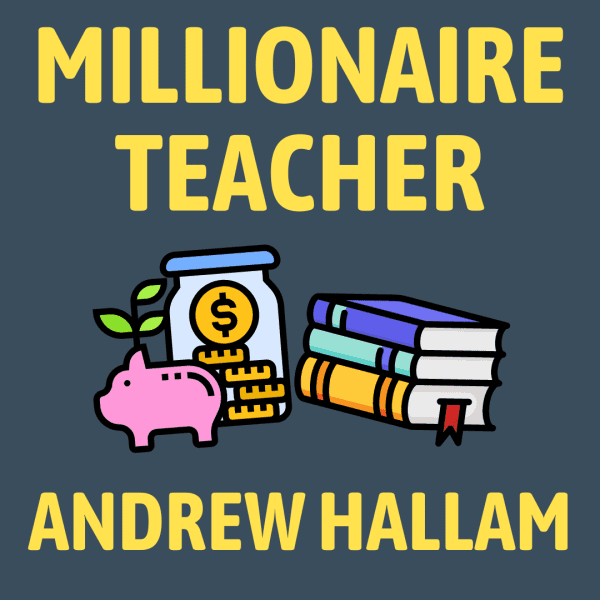











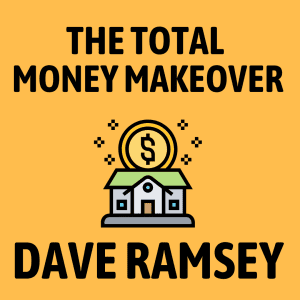

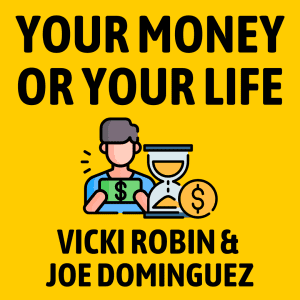
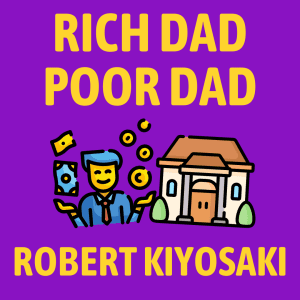
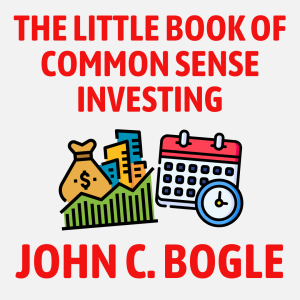
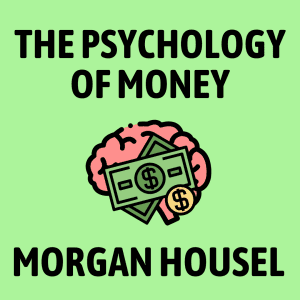
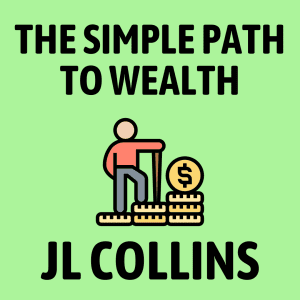
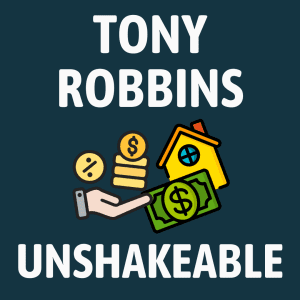
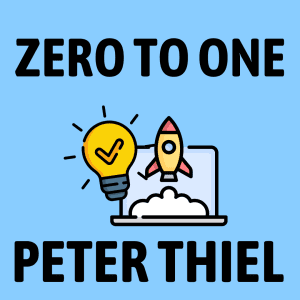

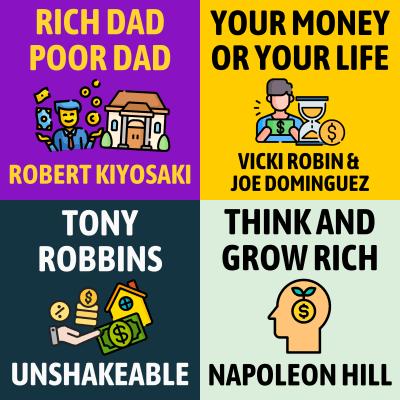
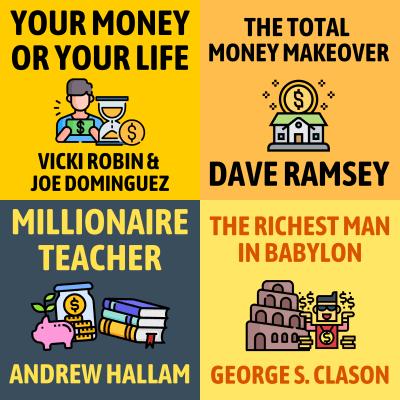
Community Notes